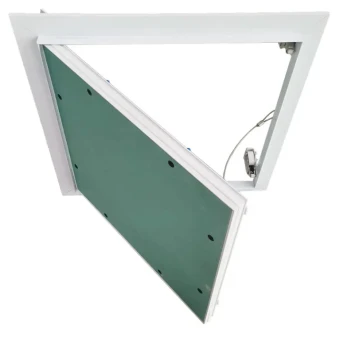- Afrikaans
- Albanian
- Amharic
- Arabic
- Armenian
- Azerbaijani
- Basque
- Belarusian
- Bengali
- Bosnian
- Bulgarian
- Catalan
- Cebuano
- Corsican
- Croatian
- Czech
- Danish
- Dutch
- English
- Esperanto
- Estonian
- French
- German
- Greek
- Hindi
- Indonesian
- irish
- Italian
- Japanese
- Korean
- Lao
- Malay
- Myanmar
- Norwegian
- Norwegian
- Polish
- Portuguese
- Romanian
- Russian
- Serbian
- Spanish
- Swedish
- Thai
- Turkish
- Ukrainian
- Uzbek
- Vietnamese
дек. . 24, 2024 16:46 Back to list
Exploring Acoustic Solutions for Cross T-Grid Ceiling Systems
Understanding Cross T Drop Ceilings A Comprehensive Overview
In modern architecture and interior design, the choice of ceilings plays a crucial role in both aesthetics and functionality. Among the multitude of ceiling types available, cross t drop ceilings have emerged as a popular option for various commercial and residential spaces. This article delves into the intricacies of cross t drop ceilings, exploring their construction, benefits, applications, and maintenance.
What Is a Cross T Drop Ceiling?
A cross t drop ceiling, also known as a suspended ceiling, consists of a grid framework that supports individual ceiling tiles. The cross t refers to the shape of the supports that intersect to form a grid, resembling a series of T shapes. This grid is typically made from lightweight materials such as metal, which are designed to hold ceiling tiles in place while allowing for easy access to overhead utilities.
Construction and Installation
The installation of a cross t drop ceiling generally begins with determining the desired height of the ceiling. Once the height has been established, a grid system is laid out directly onto the wall's perimeter. The main runners (or cross tees) are then installed, with the cross tees placed at regular intervals to support the ceiling tiles. The beauty of a cross t drop ceiling lies in its modular nature, enabling quick installation and removal of tiles.
After the framework is in place, ceiling tiles—often made of mineral fiber, fiberglass, or aluminum—are fitted into the grid. These tiles can be customized to suit different needs, including sound absorption and moisture resistance.
Benefits of Cross T Drop Ceilings
1. Accessibility One of the most significant advantages of cross t drop ceilings is their accessibility. The suspended nature allows easy access to plumbing, electrical systems, and HVAC ductwork, which can be essential for maintenance and repairs.
2. Sound Control Many ceiling tiles are designed to reduce noise and improve acoustics in a space. This is particularly beneficial in office environments where distractions can hinder productivity.
3. Aesthetic Versatility Cross t drop ceilings are available in a variety of styles, colors, and finishes, enabling them to complement various design themes. Whether it’s a classic office, a modern café, or an elegant retail space, there is a ceiling tile that fits the bill.
cross t drop ceiling

4. Cost-Effectiveness Compared to traditional drywall ceilings, cross t drop ceilings are relatively economical. The materials are affordable, and the ease of installation can save costs on labor.
5. Energy Efficiency Some modern ceiling tiles come with energy-efficient properties, contributing to better insulation and reduced energy costs in heating and cooling.
Applications of Cross T Drop Ceilings
Cross t drop ceilings are widely used in different settings, including
- Commercial Spaces They are particularly favored in offices, retail stores, and hospitality venues where both aesthetics and utility access are essential.
- Educational Institutions Schools and universities commonly use these ceilings due to their sound absorbent qualities and durability.
- Healthcare Facilities Hospitals and clinics benefit from the sanitary options available for ceiling tiles, which can be easily cleaned or replaced.
Maintenance and Considerations
While cross t drop ceilings offer several benefits, proper maintenance is essential to preserve their longevity and functionality. Regular inspections should be conducted to identify any tiles that may have become damaged due to water intrusion or physical impacts. Cleaning ceiling tiles periodically can help maintain their appearance and prevent dust accumulation.
In conclusion, cross t drop ceilings offer a versatile and practical solution for various environments. Their ease of installation, aesthetic adaptability, and cost-effectiveness make them a preferred choice for architects and interior designers alike. As the landscape of design continues to evolve, cross t drop ceilings will undoubtedly remain a staple in creating functional and visually appealing spaces.
-
Transform Interiors with PVC Gypsum Ceiling: A Stylish, Durable, and Moisture-Resistant SolutionNewsMay.19,2025
-
The Smart Interior Upgrade: Discover the Durability and Versatility of Gypsum Ceiling Access Panel SolutionsNewsMay.19,2025
-
The Smart Choice for Interior Design: Discover the Value of PVC Gypsum Ceiling SolutionsNewsMay.19,2025
-
Mineral Fiber Ceiling Tiles: The Smart Blend of Performance and AestheticsNewsMay.19,2025
-
Mineral Fiber Ceiling Tiles: The Superior Choice Over Gypsum for Sound and Fire SafetyNewsMay.19,2025
-
Mineral Fiber Ceiling Tiles: Eco-Friendly Strength and Style for Every CeilingNewsMay.19,2025







